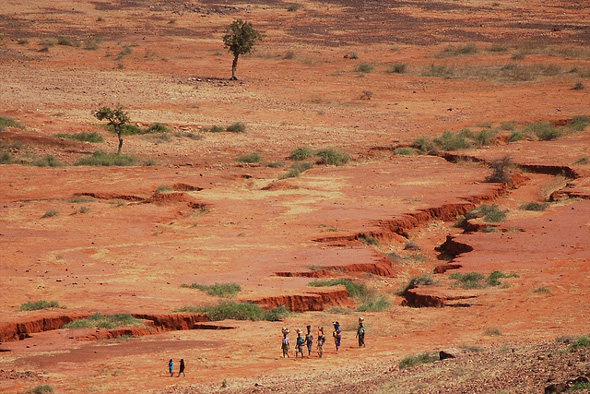-
Jill Hagey, Behind the Numbers
Sahel Drought: Putting Malnutrition in the News
September 7, 2012 By Wilson Center Staff
The original version of this article, by Jill Hagey, appeared on the Population Reference Bureau’s Behind the Numbers blog.
Over the past few months, the Sahel drought has sparked attention of news media and concerned citizens around the world. Throughout this media blitz, I have been struck by the sharp contrast between this coverage and how the devastating effects of malnutrition are usually portrayed. Malnutrition is often overlooked in favor of more “newsworthy” diseases, and it takes a crisis to focus our attention on this public health issue. Yet an emergency such as this drought – affecting more than 18 million people, including nearly 2 million children – is difficult to ignore.
As the third in a series of droughts in less than a decade in the Sahel, this crisis has affected parts of Burkina Faso, Cameroon, Chad, Gambia, Mali, Mauritania, Niger, Nigeria, and Senegal. This year, the region experienced low rainfall, locust attacks, and violence in Nigeria and Mali. Grain production decreased by one-fourth, and prices increased to the point where few people can afford the food they need. The violence in Nigeria and Mali has prevented people from moving to areas with better harvests, and thousands of refugees have settled into countries without the resources to feed them.
What many may not know is that every year more than 475,000 children die in the region from nutrition-related causes, even when there is no crisis. In fact, the Sahel region has one of the highest rates of stunting – or chronic malnutrition – worldwide. Stunting is a persistent, long-term problem, and is often hard to see in children. The invisible nature of this public health problem makes it difficult to communicate the urgency of the situation and rally country and global leaders to fight for children’s nutrition. But early childhood malnutrition greatly increases the risk of death, and can lead to mental and physical impairment, which is almost always irreversible.
Continue reading on Behind the Numbers.
Photo Credit: Sahel landscape, courtesy of flickr user CIFOR.
Topics: Africa, agriculture, Burkina Faso, Cameroon, Chad, conflict, development, food security, foreign policy, global health, Mali, Mauritania, Niger, Nigeria, nutrition, On the Beat, population, Sahel, Senegal, The Gambia, youth
 A Publication of the Stimson Center.
A Publication of the Stimson Center.



